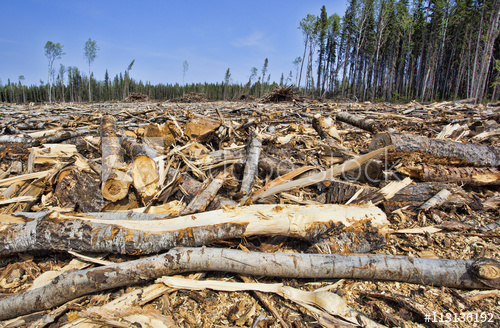Natural climate solutions for the United States
A ground-breaking New study shows that better stewardship of land use in the US could cost-effectively cut the equivalent of over a fifth of US greenhouse gas emissions.
Of the 21 natural solutions analysed, increased reforestation (the planting of trees) emerged as the largest means available to achieve greater carbon storage at a landscape level, equivalent to eliminating the emissions of 65 million passenger cars annually.
Other high-performing forest solutions include allowing longer periods between timber harvest to increase carbon storage; increasing controlled burns and strategic thinning in forests to reduce the risk of ‘megafire’; and avoided loss of forests from urban sprawl.
 Forest related Climate mitigation potential – United States – Extract from larger Table
Forest related Climate mitigation potential – United States – Extract from larger Table
For example, in Oregon, reforestation has the climate mitigation potential of 5.58 metric tonnes of CO2 per year. The equivalent emission reduction potential for reforestation in Washington is 4.82 metric tonnes of CO2 per year, with an additional 1.48 metric tonnes of CO2 per year from fire management.
To give perspective on the magnitude of potential emission reductions, in 2014 Washington’s net emissions were 50 million tons CO2e per year. The cumulative emission reductions potential using natural climate approaches is estimated at 14 million tons CO2e per year, roughly 28 percent of the 2014 emissions. Similar savings are possible in Oregon.
The peer-reviewed study, published in the journal Science Advances and led by The Nature Conservancy alongside 21 institutional partners found by conserving, restoring and improving the management of natural and agricultural lands, it’s possible to increase carbon storage and avoid greenhouse gas (GHC) emissions in the US to the tune of 1.3 billion tonnes a year. (GHGs are measured in CO2 equivalents CO2e).
This is the equivalent to removing more than a fifth (21%) of the carbon pollution in the US and represents more than a tenth of the global potential of natural climate solutions.
The study is the first in the US to include the potential of coastal wetlands and grasslands, alongside the more established areas of forests and agriculture.
Natural climate solutions provide value for money, create jobs and improve local livelihoods, and help meet the U.N. Sustainable Development Goals.
They provide additional benefits such as reduced flooding, improved air and water quality; soil health; biodiversity; and increased adaptation and resilience to natural disasters associated with a changing climate.
Reforestation has the single largest maximum mitigation potential of 307 Tg (1 Tg equals one million tonnes) of CO2e per year. Most of this potential occurs in the northeast (35%) and south central (31%) areas of the United States. This mitigation potential increases to 381 Tg CO2e year−1 if all pastures in historically forested areas are reforested.
Natural forest management of privately held forests has the second largest maximum mitigation potential (267 Tg CO2e year−1).
This maximum mitigation is achieved by extending harvest cycles. Mitigation can also be achieved through forest management practices such as reduced impact logging and improved silvicultural practices that release suppressed forest growth, although often at lower sequestration rates than extending harvest cycles.
These management practices can be implemented at low or no net cost and do not require a change in business-as-usual (BAU) land use or ownership rights.
The report on Carbon Sequestration of Forest-Based Building Products published last years by the Pacific Northwest Building Resilience Coalition also highlighted the importance of more sustainable forest management practices.
The study identified a maximum of 156 million acres with potential for reforestation, 123 million acres where forest harvest rotations could be extended; and 82 million additional acres of forests in the US that would benefit from fire risk reduction treatments on federally managed forests. In addition, almost a million acres of forest are currently being converted to non-forest habitat a year, largely due to suburban and exurban expansion, which could be addressed through better land use planning. The study also finds that urban reforestation can add important carbon storage benefits.
Associated with the study, the Nature Conservancy has published an interactive map using 11 different Natural Climate Solution approaches, all broken down at the state level. The map and associated tables show each state’s potential for emissions reduction, an important tool for policy and planning purposes.
More details on the study are available here. The Interactive Map broken down by state is available here. The full study is available here.
This article was first published by the Pacific Northwest Building Resilience Coalition and is reprinted here with permission.








